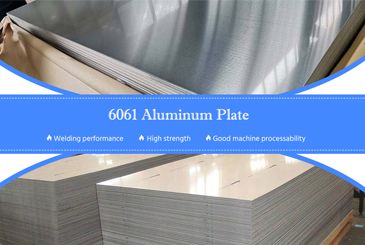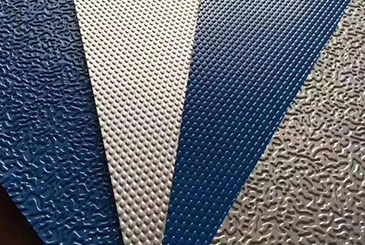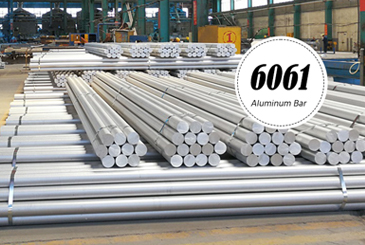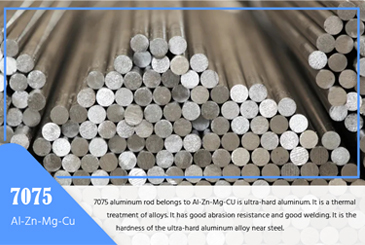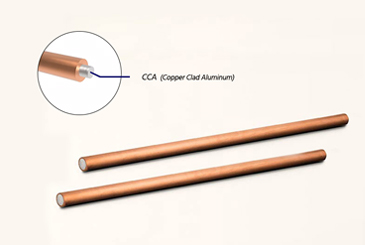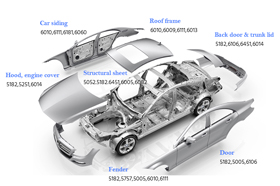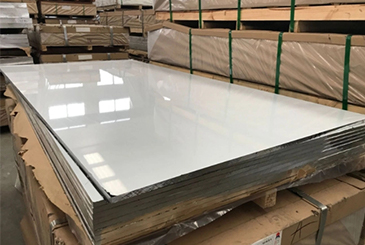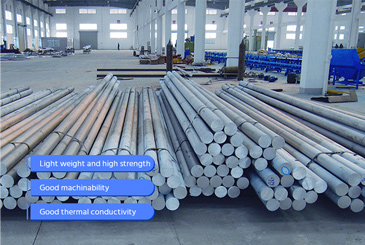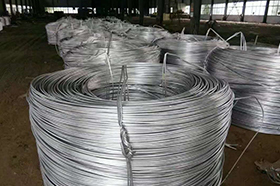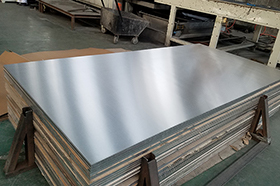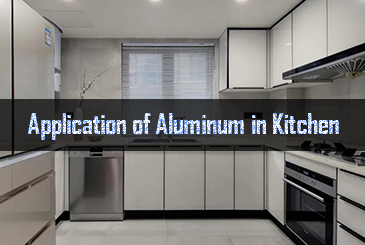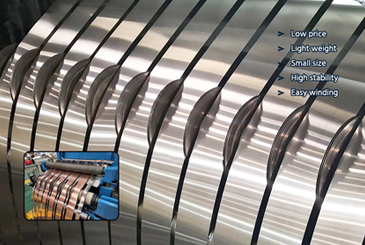The specifications of the Pre-sensitized plate substrate
| Alloy | Temper | Thickness (mm) | Width (mm) | Length (mm) | Coil ID (mm) |
| 1050, 1052, 1060, 1070 | H16, H18 | 0.13-1.50 | 500-1600 | 500-2000 | 150-510 |
The chemical composition of the Pre-sensitized plate substrate
| Element | Composition (%) | ||
| 1050 | 1060 | 1070 | |
| Aluminum (Al) | ≥99.5 | ≥99.6 | ≥99.7 |
| Silicon (Si) | 0.0-0.25 | 0.0-0.25 | 0.0-0.2 |
| Iron (Fe) | 0.0-0.4 | 0.0-0.35 | 0.0-0.25 |
| Copper (Cu) | 0.0-0.05 | 0.0-0.05 | 0.0-0.04 |
| Manganese (Mn) | 0.0-0.05 | 0.0-0.03 | 0.0-0.03 |
| Magnesium (Mg) | 0.0-0.05 | 0.0-0.03 | 0.0-0.03 |
| Zinc (Zn) | 0.0-0.05 | 0.0-0.05 | 0.0-0.04 |
| Titanium (Ti) | 0.0-0.03 | 0.0-0.03 | 0.0-0.03 |
| Vanadium (V) | 0.0-0.05 | 0.0-0.05 | 0.0-0.05 |
| Remainder (each) | 0.0-0.03 | 0.0-0.03 | 0.0-0.03 |
| Remainder (total) | - | - | - |
The mechanical properties of the Pre-sensitized plate substrate
| Alloy | Temper | Tensile strength (MPa) | Elongation A50mm(%) |
| ≥ | |||
| 1050, 1052, 1060, 1070 | H18 | 150 | 1 |
| H16 | 130-170 | 2 | |
The simulated proofing performance of the Pre-sensitized plate substrate
| Alloy | Temper | Plate temperature/℃ | Holding time/min | Tensile strength after baking (MPa) | Appearance |
| 1050, 1052, 1060, 1070 | H18, H16 | 260 ±2 | 5 | ≥115 | The baked plate sample has no visible warpage or deformation |
| 280 ±2 | 5 | ≥100 |
Categories and applications of Pre-sensitized plate substrate
| Product Category | Abbreviation | Applications |
| conventional printing PS plate base | conventional printing plate, strip | aluminum base for printing on ordinary paper such as newspapers and books |
| color printing PS plate base | color printing plate, strip | aluminum base for printing on illustrations, color printing paper, and specialty paper |
| CTP printing PS plate base | CTP plate, strip | aluminum base for computer-to-plate (CTP) printing |
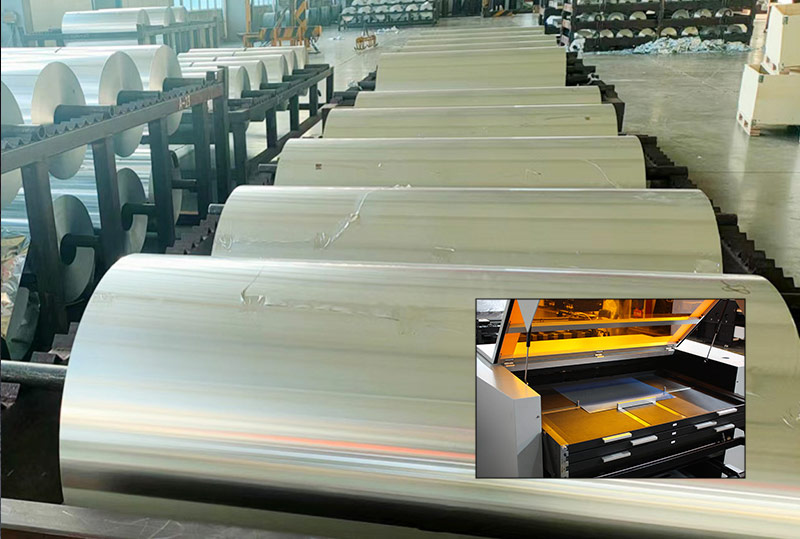
Allowable thickness deviation of Pre-sensitized plate substrate
| Thickness (mm) | Product Categories | Allowable deviation(mm) |
| ≤0.20 | all | ±0.005 |
| >0.20-0.30 | conventional printing plate, strip | ±0.01 |
| color printing plate, strip | ±0.008 | |
| CTP plate, strip | ±0.005 | |
| >0.30-0.50 | all | ±0.015 |
Flatness requirements of Pre-sensitized plate substrate
conventional printing plate material, strip material
In the flatness requirement for every meter length, the maximum wave height should not exceed 3mm, and the number of waves should not exceed 3.
color printing strip material
In the flatness requirement for every meter length, the maximum wave height should not exceed 2mm, and the number of waves should not exceed 3.
CTP strip material
In the flatness requirement for every meter length, if located in the central region, the maximum wave height should not exceed 1.5mm, the number of waves should not exceed 3, and the sum of all wave heights should not exceed 2.0mm.
If located in the edge region, the maximum wave height should not exceed 1.0mm, the number of waves should not exceed 2, and the sum of all wave heights should not exceed 1.5mm.
Appearance requirements of Pre-sensitized plate substrate
CTP strip material
No cracks, edge cracks, bubbles, through-air holes, corrosion, peeling, folds, press marks, periodic printing marks, strip-like roll grain impressions, winding adhesion, metal indentations, or non-metal indentations.
No pressure scratches, visually invisible vibrations, or roller prints.
No dendritic patterns, point-like roll grain impressions, or aluminum adhesion.
No roller marks, embossing, bright bands, or color differences.
After electrolysis, there should be no visible deep, dark-colored bars.
color printing strip material
No cracks, edge cracks, bubbles, penetrating air holes, corrosion, peeling, folds, pressure marks, periodic printing marks, strip-like roll grain impressions, winding adhesion, metal indentations, or non-metal indentations. No pressure scratches. Visually invisible vibrations, roller prints. No loose dendritic patterns, point-like roll grain impressions, or aluminum adhesion.
No roller marks, embossing, bright bands, or color differences.
After oxidation, there should be no visible depth, with no individual dark-colored bars larger than 10mm in length per square meter.
conventional printing plate material, strip material
No cracks, edge cracks, bubbles, penetrating air holes, corrosion, peeling, folds, pressure marks, periodic printing marks, strip-like roll grain impressions, winding adhesion, metal indentations, or non-metal indentations.
No individual dark-colored bars larger than 300mm in length per square meter. No pressure scratches on the dots (or lines) larger than 2mm per square meter.
Slight defects such as vibrations, roller prints, roller marks, embossing, bright bands, color differences, etc., are allowed to be visually visible but should not cover more than 30% of the surface area of the plate in the transverse direction.
No loose dendritic patterns, point-like roll grain impressions, or aluminum adhesion.
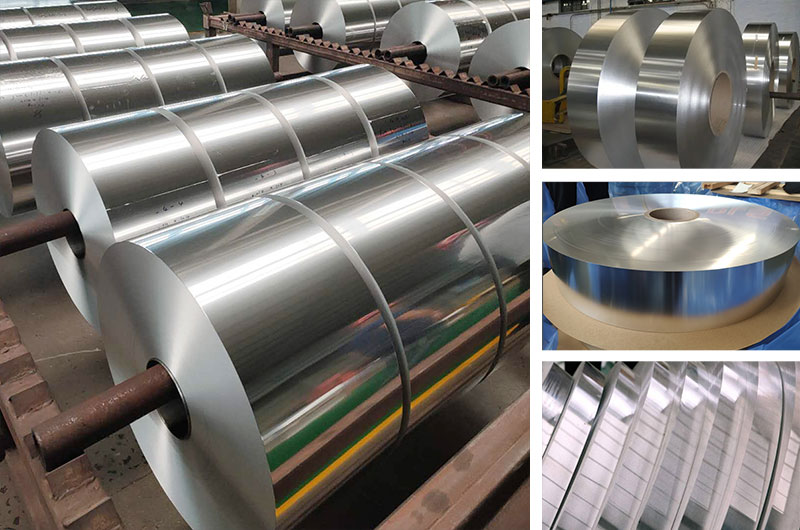
Why choose Chalco Aluminum
Chalco's printing plate base aluminum strip, produced by Chalco, features excellent surface quality characterized by cleanliness and zero defects.
The use of heat treatment processes imparts outstanding heat-softening resistance to the strip, thereby preventing deformation of the material. Electrochemical treatment is employed to ensure consistent surface roughness.
Chalco strictly controls the internal quality of the aluminum strip, prohibiting any occurrence of uneven chemical composition, coarse structure, and abnormal shape and size of compounds within the strip.
The printing plate base aluminum strip produced by Chalco exhibits superior adhesion properties to photosensitive materials.
Chalco serves as a reliable supplier to leading photosensitive material manufacturers such as Lucky Film, Fujifilm, Kodak, and Agfa, ensuring stable and consistent supply.

Development trends of printing plate base aluminum strip
Aluminum is an ideal material for lithographic printing plates due to its lightweight and recyclable nature.
The electrochemical process provides aluminum plates with surface roughness suitable for lithographic printing plates. Therefore, aluminum sheets are well-suited as the support body for lithographic plates.
Furthermore, following the patterns of technological development, continuous innovation in production techniques leads to the replacement of outdated methods with advanced ones.
In the offset printing industry, computer-to-plate (CTP) technology is expected to replace traditional plate-making techniques. However, traditional PS plates will not disappear immediately and are likely to remain for the foreseeable future.


